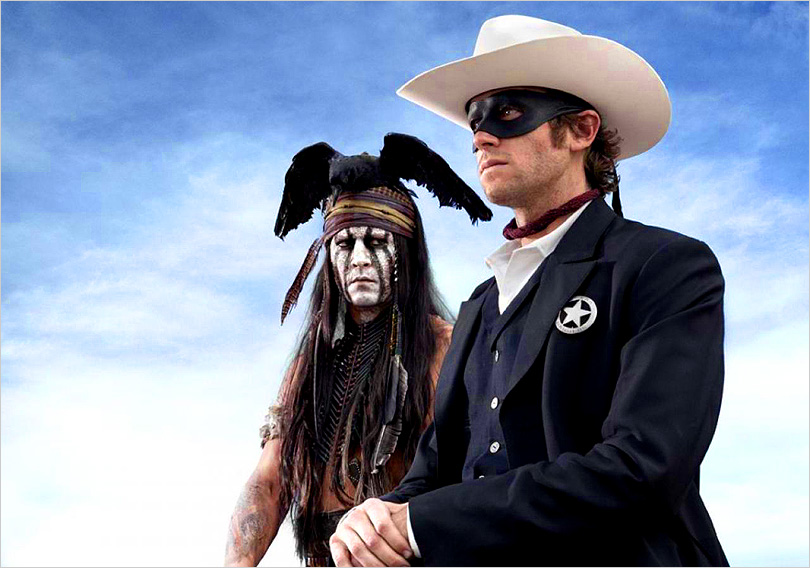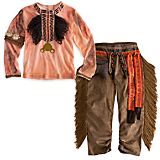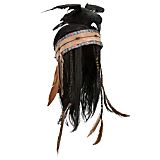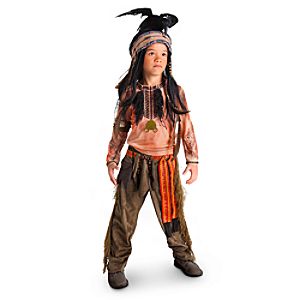A colleague has investigated some of the rumors and claims about Johnny Depp's
Lone Ranger. She basically confirmed everything I've written, including my speculation. Here are her findings (in italics) and my responses.
Depp is the first executive producer listed in the IMDB entry for The Lone Ranger. His production company, Infinitum Nihil, is one of six production companies listed.
This tallies with what I've said before about Disney's coming to Depp and greenlighting the film because of him.
The Lone Ranger is a star vehicle for Depp. He's the 800-pound gorilla in the room.
He wasn't handed a script, a costume, and an interpretation of Tonto by others. He determined, controlled, or oversaw these things. If Tonto is stereotypical, it's because Depp wanted him that way. Depp gets the credit or the blame for the movie's portrayal of Indians.
Voelker's role
William Voelker, the movie's Comanche adviser, isn't a historian. He studied ornithology in college but didn't even graduate. So his comments on Comanche history and culture are questionable at best.
Voelker still may be knowledgeable about Comanche history and culture, but there's no reason to
assume he is. After all, many Americans don't know anything about US history.
Disney doesn't pay its consultants individually, but it made a donation to Voelker's SIA foundation for eagles.
Far from eliminating the "conflict of interest" question, this donation makes it worse. Voelker might've refused a personal payment, but he may feel obligated to save his eagles at any cost. Therefore, he wouldn't criticize his financial backers even if they were wrong.
Tonto developed as follows: Depp saw Kirby Sattler's painting => invented Tonto's look => went to Voelker => asked him what they could say about the look.
So Voelker was given a fait accompli. He was asked to say yes or no to a multimillion-dollar production, with Disney's funding of his eagle foundation on the line. Wow...talk about a situation guaranteed to produce a desired outcome.
There's a strong implication that Voelker invented his "bird culture" comment to mollify Depp and company. We're supposed to believe that eagles are like crows and wearing eagles feathers is like wearing a crow headdress. Sorry, no sale.
Again, it strains credulity to claim that Tonto's look, which Depp got from a non-Comanche fantasy painting, just happens to represent Comanche culture perfectly. No one's ever seen a Comanche in a headdress or face-paint like Tonto's, so it must be an incredible coincidence.
The Comanche don't distinguish between ravens and crows. Voelker was adamant that both are part of the Comanche "bird culture."
Again, show us the evidence. I don't take the word of someone who isn't a Comanche historian and has a clear conflict of interest.
Voelker knew about the Wendigo storyline but stayed out of it.
See previous comments about his conflict of interest. A real adviser would've said something about this.
Indeed, he would've threatened to go public with his displeasure unless Depp and company changed it. How can you claim to be a Comanche expert when you let a gross falsification of your culture pass without comment?
If you're gonna take the job, then
do the job. Don't shill for the company like a spin doctor and expect us to accept it.
Depp's heritage
The Cherokee Nation said Depp isn't one of them--a Cherokee--so they didn't feel obligated to help him. But they left the door open if he came to them. Depp did nothing in response to this offer.
Presumably because Depp knows his unsubstantiated story about having a Cherokee ancestor would've come under increased scrutiny.
LaDonna Harris was a fan of Depp's and felt bad about the criticism he was getting. She adopted him into her family only. The Comanche don't adopt people into the tribe as a whole.
The Comanche Nation also gave Depp a
certificate saying he's an honorary tribal member. But Harris's adoption ceremony got the most publicity, with people claiming Depp was now a full-fledged tribal member. Wrong.
Then there's the whole bit about
Tonto's Giant Nuts, Johnny Depp's band. This name is about as respectful as Ted Nugent's wearing a headdress in concerts. It shows zero appreciation of Depp's alleged Cherokee ancestry. Indeed, it shows zero appreciation of anything except a stereotypical notion of Indians as macho warrior types.
For more on
Johnny Depp, see
Depp's Tonto: True or False? and
Hammer Says Indians Love Depp.
